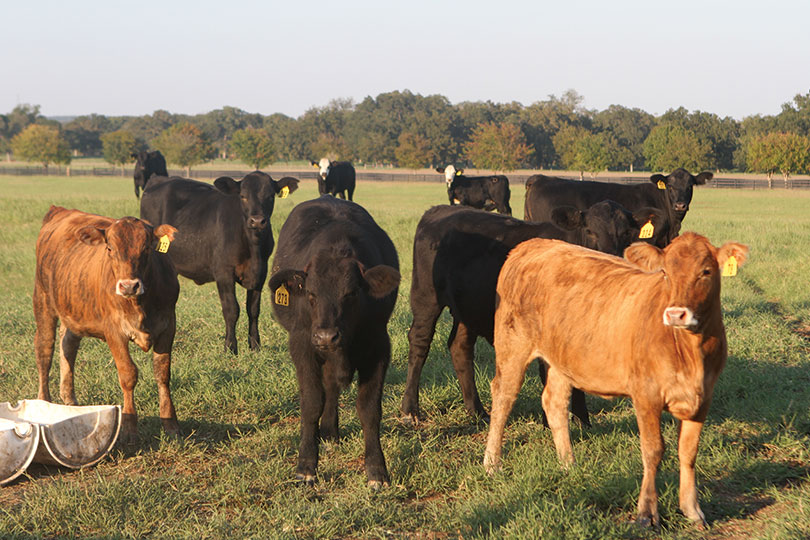By Jennifer Dorsett
Field Editor
The U.S. Department of Agriculture’s (USDA) latest Livestock, Dairy and Poultry Outlook shows year-over-year declines in every type of meat tracked.
Disruptions in U.S. meat production—beef, pork, broiler and turkey—in April are attributed to the shutdowns in meat packing facilities across the nation, where clusters of COVID-19 infections forced companies to slow down or temporarily suspend operations.
Beef
Although U.S. beef production was strong at the beginning of the year—hitting top levels, including the largest number of cattle slaughtered for the quarter since 2002 and the heaviest dressed weights since 2016—last month’s federally inspected beef production volume fell 21 percent from April 2019.
Second quarter 2020 boxed beef cutout values are seeing record numbers, far exceeding previous highs set in 2014 and 2015 when supplies were tight due to severe, prolonged drought that forced massive cattle herd liquidations.
USDA data show beef production peaked during the week ending March 28, then rapidly declined. At the market’s highest point in late March, boxed beef sales skyrocketed to more than 560 million pounds. However, only weeks later in early May, boxed beef sales plummeted to about 350 million pounds sold.
The report noted slaughter levels are expected to be restricted for the rest of the year due to COVID-19 challenges at packing facilities. Slaughter capacity is expected to recover in 2021, with USDA predicting beef commercial production to reach 27.5 billion pounds next year—a new record.
Beef imports were revised lower as supplies from Australia and other areas of Oceania tightened, and USDA said tighter domestic supplies combined with global economic uncertainty will shrink exports throughout the rest of 2020, as well.
Exports should rebound in 2021 to almost 9 percent higher than 2020. Overall, cattle imports and exports in 2020 are expected to be lower than the previous year but are expected to recover slightly in 2021.
Pork
Estimated pork production in April fell to 2.3 billion pounds, more than 11 percent below 2019 levels, as hog processing plants in several states reduced throughput due to COVID-19-related labor shortages.
According to USDA, the virus will likely constrain processing plants to varying degrees through 2021, lowering expected pork production totals.
Lower U.S. pork production, increases in pork prices and declines in global economic growth will hamper the pork export market’s growth for the rest of 2020, but the industry should still see an overall 13 percent increase from 2019, according to USDA.
Poultry and eggs
The spread of COVID-19 in poultry processing plants caused year-over-year reductions in broiler and turkey production, as well.
April 2020 broiler production was down 2 percent below production in April 2019, and turkey production fell 8.3 percent from the same time last year.
Slower processing volumes and hatchery data led USDA to decrease 2020 broiler production data. The agency also lowered broiler price forecasts, noting prices were expected to remain soft for the rest of the year and throughout 2021.
Egg production is looking up, however. The 2020 egg price forecast was increased based on higher prices in April and expected sustained retail demand.
Table egg production forecast is up slightly, but hatching egg production was revised downward on reduced broiler production. In 2021, table egg production is expected to increase because of higher laying rates and a bigger layer flock.
Turkey production is also revised down to 5.8 billion pounds for 2020 because of decreases in processing capacity and poults placed. Production in 2021 is expected to increase 1 percent over 2020, with prices remaining relatively flat for that year.
Exports of turkeys are down 9 percent from 2019 but should bounce back slightly in 2021.
Lamb
First quarter production of lamb in 2020 was higher than forecast, but reported lamb prices have declined significantly since the end of April. As a result, lamb price forecasts have been lowered for the last three quarters of 2020.
The agency said spring or Easter is when lamb is generally consumed at home, but a large percentage of lamb is also consumed away from home throughout the year, such as at restaurants.
Traditionally, lamb prices drop after Easter, but USDA attributes this year’s larger-than-expected post-Easter decline to the loss of away-from-home sales of lamb.
USDA expects lamb production to remain stable, if somewhat flat, throughout 2020 and 2021.
Dairy
USDA reports COVID-19 has been “very challenging” for the dairy industry, and the extent of the issue remains unclear.
In April, low domestic demand for dairy was due in large part to the shift from consumption at foodservice establishments to at-home consumption. USDA said Americans typically consume higher proportions of dairy products when dining out than at home.
In addition, the agency reported supply-chain bottlenecks caused by logistical and packaging problems hit the dairy industry at the same time milk production generally reaches peak production.
Milk production forecasts for 2020 are up slightly, and the all-milk price forecast for 2020 is now $14.55 per hundredweight (cwt), up from last month’s forecast of $14.35 per cwt.
Export forecasts for 2020 have been raised 0.3 billion pounds on a milk-fat milk-equivalent basis and by 2.3 billion pounds on a skim-solids milk-equivalent basis, according to the USDA report. In 2021, USDA predicts milk production to grow to 224.1 billion pounds, and the all-milk forecast is up at $15.00 per cwt.
More information on meat production, including monthly outlooks on other agricultural commodities, can be found here.
Click here for a new report that shows the preliminary impact of COVID-19 on Texas agriculture, including meat, dairy and row crops.

